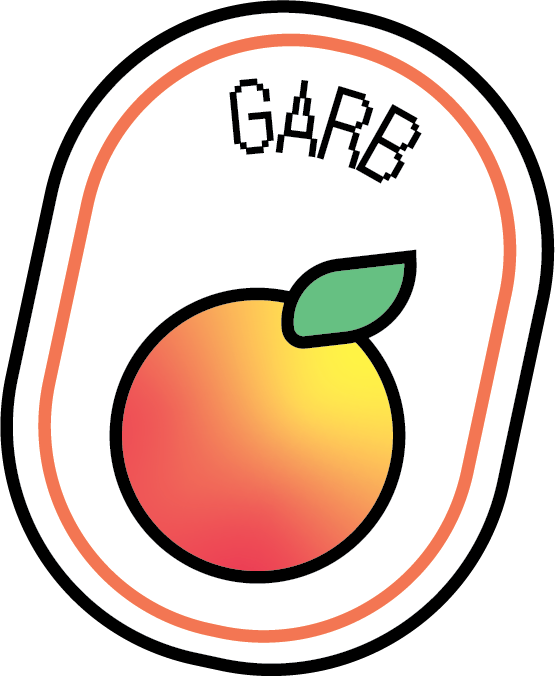From Trash to Treasure: Reimagining Fashion's Future Through Our Garb-age Runway
Design by Madison Brown
My favorite sweatshirt in my closet is one I found on top of a pile of dirty and broken miscellaneous items on the side of the road. One man's trash really was my treasure. I picked up the green piece, admiring the dog sled crew running across the chest, on a Sunday. A few more hours and it would've been the end of the road for those puppies—trash day in Berkeley is Monday.
This sweatshirt could have been another statistic in fashion's environmental nightmare. Sitting in a landfill for decades or even centuries—a fate shared by millions of clothing items discarded each year. Fashion is a vibrant form of personal storytelling, but beneath the creativity lies a sobering environmental reality. Globally, fashion contributes 10% of greenhouse gas emissions and generates millions of tons of textile waste every year, much of which ends up in landfills. Synthetic materials, often used in fast fashion, can take centuries to break down. According to a 2022 report by the Hot or Cool Institute, we need to limit ourselves to just five new clothing pieces per year to keep the industry within its carbon budget.
While that statistic may feel daunting, I’ve found that sustainable fashion is one of the most accessible ways to make a difference. Unlike sweeping policy changes or corporate regulations, our consumption habits are within our control. Buying secondhand or upcycling allows us to reduce waste and save money while embracing creativity and individuality.
That sense of individuality is something people are craving more and more in fashion today, especially as fast fashion continues to flood the market with mass-produced styles.
There’s a reason thrifted and upcycled outfits get so much love: they’re one of a kind, we can’t just go buy it on Shein, TikTok shop, or off an affiliate link. This is where the artistic aspects of fashion truly emerge—pieces we can appreciate for their originality and creativity, even if they’re not something we can simply buy ourselves. One of our designers, Morgan Dickson, articulates how “The mindless subscription to the fast fashion industry feels like a disheartening shift in humanity, one that without change, is steering toward a total loss of individuality, expression, and progress.” Upcycling and thrifting clothing presents a perfect opportunity for reclaiming that lost individuality, allowing us to reconnect with ourselves and develop a sense of personal style, something that, as Morgan said, is easy to lose in a world overwhelmed by fast-paced trend cycles and influencer-driven homogeneity.
In creating the Garb-age runway, we wanted to paint a picture of what circular fashion could look like while encouraging our audience to integrate sustainable practices into their consumption habits. We also wanted to make a bold statement to the industry—if our student designers could transform what was once trash into wearable art, major brands could recycle their fabric waste, defective items, and unsold stock into new pieces. Most importantly, we wanted to give student designers the opportunity and resources to experiment and showcase their designs, free of material charge, opening designing slots to students across campus regardless of their experience level, major, or organization affiliation.
To bring this vision to life, we secured a grant through our campus' Green Events Certification Program. The grant money allowed us to source materials from the Recycling Center, Urban Ore (a local salvage yard), The Reuse Center (a second-hand craft store), and various thrift stores. Our designers had access to everything from old CDs and buttons to painted tiles, tablecloths, and electrical cords.
The runway decoration process ended up being one of my favorite parts of the show. We transformed the space using fabric scraps and chains hung from the ceiling, even creating a fabric-scraps outfit for a mannequin that became our runway centerpiece. Having an overarching theme of recycling put an inherent lens of creativity on everything we did. There were no rules—I loved looking around the room during setup and seeing people trying all sorts of innovative decoration tactics, just improvising with the materials we had on hand. The result was a unique, irreplicable event space, with designs on the windows, newspaper tablecloths, and painted traffic signs that embodied our message about upcycling's creative potential.
The runway looks took this principle even further. Our designers repurposed old shopping bags into pants, created a dress entirely from CDs, reworked salvaged denim into new designs, and even crafted a gown from discarded price tags. Each piece told its own story of renewal and reimagination.
While the show celebrated the artistic possibilities of non-traditional materials in fashion, it also aimed to spark a wider conversation within the industry. Even if it doesn’t change the world overnight, I hope the show makes people pause before tossing out their next item to ask: Can I repurpose this? Could someone else make use of it?
A circular fashion economy, where materials are reused and reinvented, is well within reach—and our designers' creations are proof of that possibility. With each CD dress, shopping bag pant, and electrical cord accessory, we weren’t just making a statement—we were stitching together a new vision of fashion that’s as unique and resourceful as the people who wear it. This event was a reminder that creativity has the power to transform not just materials, but mindsets, showing that the most sustainable resource is the ability to rethink what’s possible, laying the foundation for a more sustainable future.




